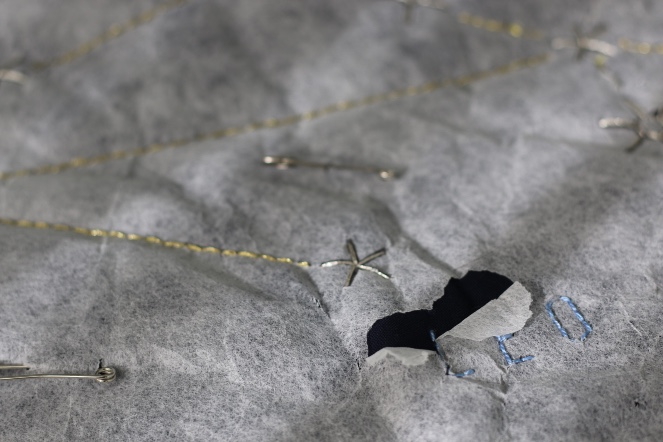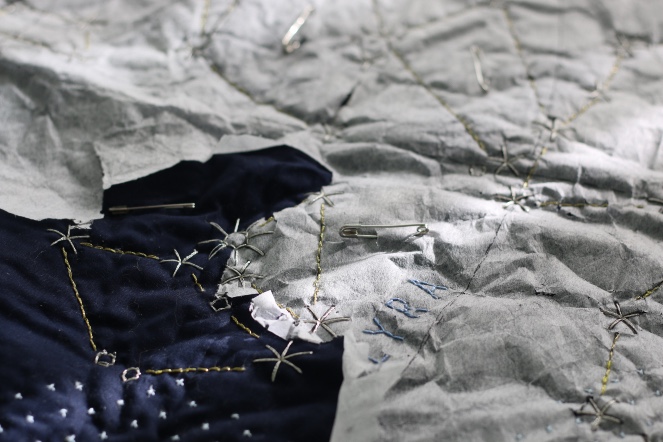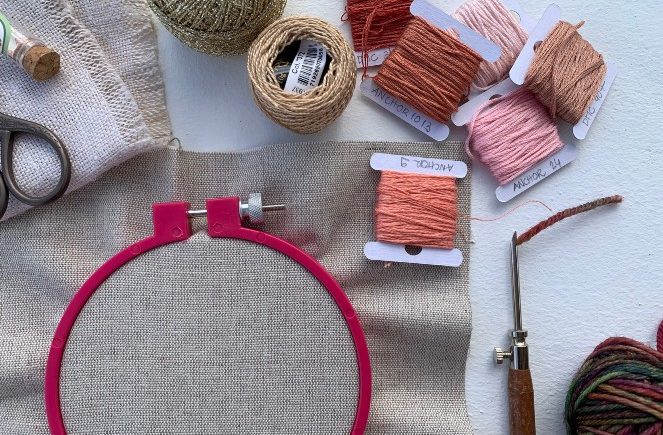My progress on the haptic lab constellation quilt
My haptic lab constellation quilt has been is a work in progress since mid-2020. It began as a long-term project from which I have learned a lot! Luckily I ended up doing it during the challenging year of 2020 and the first months of 2021. It was a reflection project that valued the routine and supported some challenging moments.



After introducing you to my handmade quilt here, I made the sandwich of the top, batting and bottom layer. This is something that is usually done almost last in a normal quilting project. To this Sandwich I also added the constellation quilt pattern on paper over the top layer. This was the basis for embroidering the stars. I think it is no longer possible to buy this paper version. But I admit that it was a blessing to still be able to get it!
Guidelines machine stitching
As a matter of consistency of this constellation quilt, I chose to machine stitch the pattern guidelines. This allowed me to dedicate the effort of hand embroidery only to the constellations. It also allowed me to manage expectations and be creative in the use of materials while reinforcing the stability of the quilt.
After stitching the guidelines I dedicated most of the time to the most fun, yet repetitive part of this project: embroidering. I searched for many possible material options for each element. I though about making everything in the same color, about the proposed stitches, and I came to the following conclusion. Since I preferred the guidelines to go unnoticed, I stitched them using a thread of the same color as the top layer. Thus, I was able to give more emphasis to the stars and relax the complexity of the design.
Embroidering the constellations
Regarding the constellations, I must say that the process was somewhat revealing. In one hand I didn’t know how the materials were going to work because the final effect was hidden below the paper pattern. So, I embraced my imagination to predict the final effect and trusted the process!
For the stars I used a 6 strand silver embroidery thread. I separated 3 strands to use each time. This thread was a headache to work because the metallic thread wears out quickly while embroidering. I learned to use smaller portions of thread to decrease the risk of tearing it too much. In spite of that, I was excited to use this thread! I think the 3 strands give the “bulcky” effect that I was looking for without the intensity of a perlé thread! In addition, I confess that metallic perlé thread is not my favorite at all.
For the connecting lines between the stars I used the same thread in a light gold. A light gold goes better with the rest of the color palette. I was undecided between an interrupted or uninterrupted line. But as I finished the first constellations, I found that the uninterrupted line created less visual clutter in the overall design.
Names and the Milky Way

Two more groups of information were missing: the names of the constellations and the stars of the Milky Way. To make them I went for a soft perlé in two shades of blue. I used the lightest for the milky way stars, and the “not so dark” blue for the names of the constellations.
In the case of the milky way stars, I had to make an important decision. I found many references saying that the French knot stitch that the pattern suggested created some problems when tearing out the paper pattern. Many stitches fall apart at that time, even if the process is done carefully. In addition, the French knot is a delicate stitch, especially if the quilt is handled a lot. Now, those who know the headache of making French knots as many times as the project calls can imagine what it is like to have to redo them over and over. So I left my perfectionism aside (or did I actually embrace it …?) and replaced the French knots with a very delicate cross stitch.
Tearing off my constellation quilt!

The embroidery part of my haptic lab constellation quilt is finally finished! Now I have already started to tear and carefully remove the paper pattern to reveal the constellations. I still have to add some details as well as trim the edges and make the binding. So I will save a final revelation, full of good photos, for a next post! For now I show you this “sneak peak” of the satisfying moments of removing the paper quilt pattern that hid the embroidery of my haptic lab constellation quilt!




































